|
Canon RF 28mm f/2.8 STM - Review / Test Report |
|
Lens Reviews -
Canon EOS (Full Format)
|
 Review by Klaus Schroiff, published July 2023
Review by Klaus Schroiff, published July 2023
Introduction
Canon may not have a Pentaxian-level love affair with pancake lenses, but they still have a history here. During the EF mount era, they had an EF-S 24mm f/2.8 STM as well as an EF 40mm f/2.8 STM.
And they continued their journey with the (sort-of pancake) RF 16mm f/2.8 STM in 2022. Fortunately, they didn't stop here, so let's welcome the new Canon RF 28mm f/2.8 STM.
There are probably two kinds of people on the planet - those who hate them because they tend to be fairly slow by modern prime lens standards, and those who love them because they provide a low profile for street photography and tend to be quite good optically (the RF 16mm f/2.8 STM proves the opposite though). Canon also states that the RF 28mm f/2.8 STM is good for vlogging, but you have to have quite long arms for this scenario.
There is one aspect that is universally welcoming, though - the price tag of just $300USD/370EUR - especially for a Canon lens.
 The RF 28mm f/2.8 STM is quite simple being. The tiny lens barrel is made of good quality plastics based on a metal mount - with a weight of just 120g. Canon doesn't state anything about weather sealing, so there's probably none.
There is an inner lens tube that extends a tiny bit from its transport position. It is a bit annoying that this inner tube retracts when trying to attach the lens cap while the camera is in "on" position (Single AF mode) - it's a bit strange that it does so. However, it means that you basically have to switch off the camera to attach the lens cap. The lens has a switch for AF/MF and Control Ring mode. The configurable Control Ring can be used to adjust a variety of exposure settings, including aperture, ISO, and exposure compensation.
A curious aspect is the glass, or to be precise, the plastic used in the lens. The front element is tiny, whereas the rear element is not only big but also highly unusual in shape - see the rear view of the lens below.
Canon used 3 so-called PMo (plastic molded) aspherical elements in the design. PMo aspherical lens elements are formed by injecting resin into an aspherical surface mold.
The RF 28mm f/2.8 STM is quite simple being. The tiny lens barrel is made of good quality plastics based on a metal mount - with a weight of just 120g. Canon doesn't state anything about weather sealing, so there's probably none.
There is an inner lens tube that extends a tiny bit from its transport position. It is a bit annoying that this inner tube retracts when trying to attach the lens cap while the camera is in "on" position (Single AF mode) - it's a bit strange that it does so. However, it means that you basically have to switch off the camera to attach the lens cap. The lens has a switch for AF/MF and Control Ring mode. The configurable Control Ring can be used to adjust a variety of exposure settings, including aperture, ISO, and exposure compensation.
A curious aspect is the glass, or to be precise, the plastic used in the lens. The front element is tiny, whereas the rear element is not only big but also highly unusual in shape - see the rear view of the lens below.
Canon used 3 so-called PMo (plastic molded) aspherical elements in the design. PMo aspherical lens elements are formed by injecting resin into an aspherical surface mold.
 The STM (Stepping-Motor) is the consumer-grade AF solution by Canon. It produces a humming noise during AF operations, but it's not all that fast (still "fast enough" though).
Manual focusing works, of course, by-wire, thus you are driving the AF motor when turning the focus ring. Optical image stabilization is not provided, as you may have guessed already.
The STM (Stepping-Motor) is the consumer-grade AF solution by Canon. It produces a humming noise during AF operations, but it's not all that fast (still "fast enough" though).
Manual focusing works, of course, by-wire, thus you are driving the AF motor when turning the focus ring. Optical image stabilization is not provided, as you may have guessed already.
| Specifications |
|---|
| Optical construction | 8 elements in 6 groups including 3x PMo aspherical element |
| Number of aperture blades | 7 |
| min. focus distance | 0.23m (max. magnification ratio 1:5.9) |
| Dimensions | 69.2x24.7mm |
| Weight | 120g |
| Filter size | 55mm |
| Hood | barrel-shaped (bayonet mount, optional) |
| Other features | Combined Focus/Control ring |
Distortion
The Canon RF 28mm f/2.8 STM produces a heavy (4.1%), albeit not excessive, degree of barrel distortion in RAW images. As usual, auto-correction reduces the issue to a negligible degree.
If you choose JPEG-only output, you can't even disable auto-correction in the camera.
Vignetting
Vignetting is one of maybe two weaknesses of the lens - technically, at least. With disabled distortion and vignetting compensation, the light falloff exceeds 3 EV (f-stops) at f/2.8. This is a bit beyond our usual scale here.
With enabled distortion correction, this is reduced to 2.65 EV, and the vignetting remains relatively high at more than 1 EV at medium aperture settings.
In essence, it makes sense to leave auto-correction activated, which reduces the vignetting to a very manageable 0.7EV at f/2.8 and just 0.4 EV from f/4 onward.

MTF (resolution) at 45 megapixels
Image resolution is a chapter where this tiny lens is a giant. The image center is already excellent at f/2.8, and the outer image field is very good to excellent. Stopping down to f/4 and f/5.6
results in minimal improvement still. Diffraction sets in beyond, but the image quality remains great at f/8 and still more than just good at f/11. f/16 and beyond should be avoided, though.
Overall this is almost as good as it gets.
There's a bit of field curvature, but it shouldn't be noticeable in most situations. The centering of the tested sample was very good.
Please note that the MTF results are not directly comparable across the different systems!
Below is a simplified summary of the formal findings. The chart shows line widths per picture height (LW/PH) which can be taken as a measure of sharpness.
If you want to know more about the MTF50 figures you may check out the corresponding Imatest Explanations

Chromatic Aberrations (CAs)
Lateral CAs are low and not disturbing even in RAW images. Auto-correction will take care of the rest here anyway.

Bokeh
A 28mm f/2.8 can't be a bokeh monster, but you can achieve some decent object isolation at close focus distances, at least.
Out-of-focus highlights are nicely rendered with a quite smooth inner disc structure and just a bit of outlining. This is quite surprising given the 3 aspherical elements in the design. Stopping down to f/4 results in edgy aperture shapes already - something that is more emphasized at f/5.6 and beyond.
 When looking at the grand picture (the whole image frame), the discs maintain a circular shape in the image center, but they are deteriorating to cat eyes at the borders and, more so, in the image corners. Stopping down corrects this issue.
The general out-of-focus rendering is quite pleasing in the image background (shown to the left below). The less critical foreground blur (shown to the right) is a bit harsher but not terribly so.
When looking at the grand picture (the whole image frame), the discs maintain a circular shape in the image center, but they are deteriorating to cat eyes at the borders and, more so, in the image corners. Stopping down corrects this issue.
The general out-of-focus rendering is quite pleasing in the image background (shown to the left below). The less critical foreground blur (shown to the right) is a bit harsher but not terribly so.
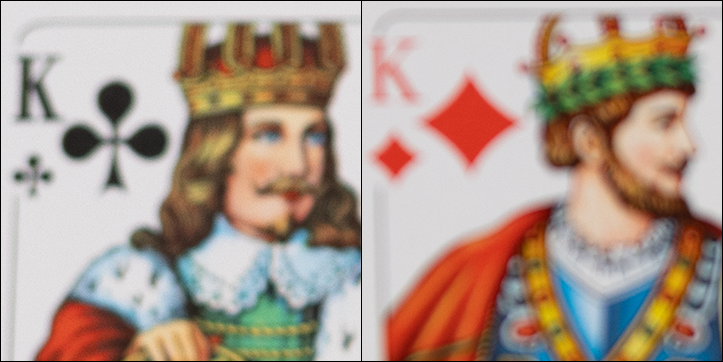
Bokeh Fringing / LoCA
Boheh fringing/LoCA is an axial color fringing effect with purplish halos in front of the focus point and greenish beyond.
The Canon lens isn't overly fast, and there's only some visible fringing at f/2.8. Traces remain at f/4 and the issue is gone at f/5.6.
Sun Stars (Experimental)
Below is a sequence of 100% cropped images from f/2.8 all the way up to f/16 - illustrating the sun star behavior. Sun stars are an aperture effect that shows up if a bright light source is part of the scene (usually in night shots). Below are some crops of a strong light source taken across the relevant aperture range.
The Canon RF 28mm f/2.8 STM has a bit of a complex characteristic here. It renders pointy stars at f/4 and f/5.6, and then it "fan's out" from f/8 with the most "dramatic" effect at f/16.
Flare
Earlier, we mentioned that the lens has two weaknesses - flare is the 2nd one. You may notice that there are some rainbow color artifacts surrounding the sun below (image taken at f/8). On the positive side - normally, such bright light sources are reflected to the opposite side of the image as well, and there are barely any visible ghostings here.

Sample Images
Click on an image to download the full-size variant.
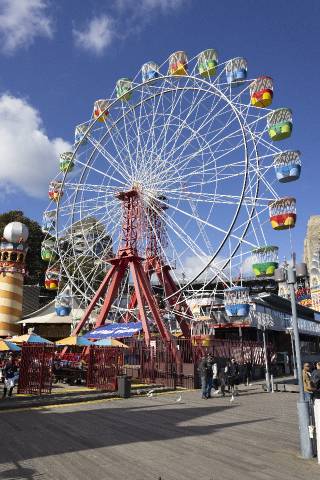 |
| Make | Canon |
| Model | Canon EOS R5 |
| ISO Speed | 200 |
| Focal Length | 28.0mm |
| Aperture: | f/8.0 |
| Exposure | 1/1000s |
 |
| Make | Canon |
| Model | Canon EOS R5 |
| ISO Speed | 200 |
| Focal Length | 28.0mm |
| Aperture: | f/8.0 |
| Exposure | 1/640s |
 |
| Make | Canon |
| Model | Canon EOS R5 |
| ISO Speed | 200 |
| Focal Length | 28.0mm |
| Aperture: | f/8.0 |
| Exposure | 1/1000s |
 |
| Make | Canon |
| Model | Canon EOS R5 |
| ISO Speed | 200 |
| Focal Length | 28.0mm |
| Aperture: | f/8.0 |
| Exposure | 1/1000s |
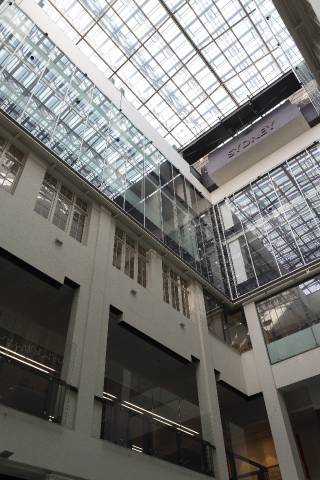 |
| Make | Canon |
| Model | Canon EOS R5 |
| ISO Speed | 200 |
| Focal Length | 28.0mm |
| Aperture: | f/5.6 |
| Exposure | 1/40s |
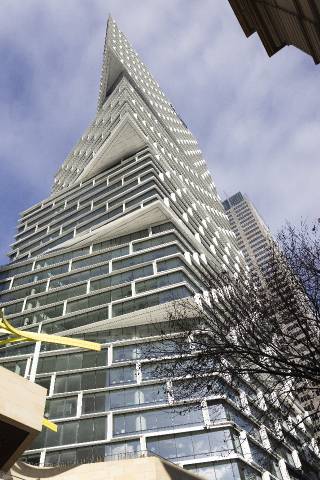 |
| Make | Canon |
| Model | Canon EOS R5 |
| ISO Speed | 200 |
| Focal Length | 28.0mm |
| Aperture: | f/5.6 |
| Exposure | 1/2000s |
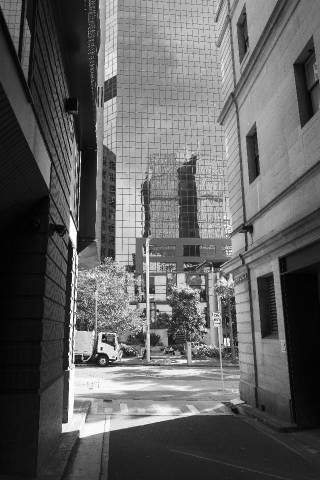 |
| Make | Canon |
| Model | Canon EOS R5 |
| ISO Speed | 200 |
| Focal Length | 28.0mm |
| Aperture: | f/8.0 |
| Exposure | 1/80s |
 |
| Make | Canon |
| Model | Canon EOS R5 |
| ISO Speed | 200 |
| Focal Length | 28.0mm |
| Aperture: | f/2.8 |
| Exposure | 1/2500s |
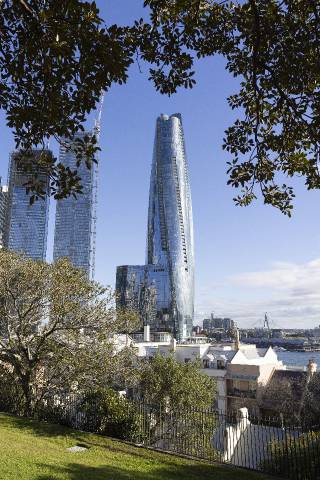 |
| Make | Canon |
| Model | Canon EOS R5 |
| ISO Speed | 200 |
| Focal Length | 28.0mm |
| Aperture: | f/5.6 |
| Exposure | 1/1000s |
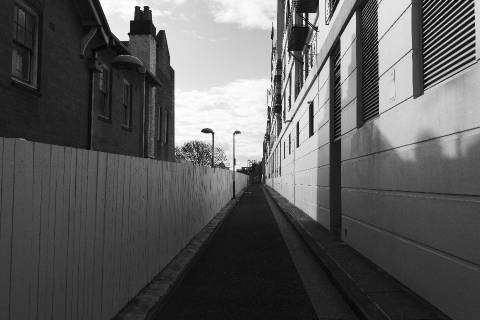 |
| Make | Canon |
| Model | Canon EOS R5 |
| ISO Speed | 200 |
| Focal Length | 28.0mm |
| Aperture: | f/9.0 |
| Exposure | 1/400s |
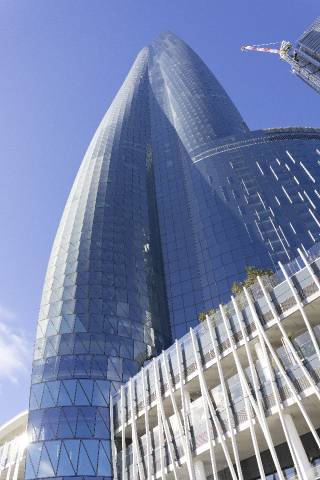 |
| Make | Canon |
| Model | Canon EOS R5 |
| ISO Speed | 200 |
| Focal Length | 28.0mm |
| Aperture: | f/5.6 |
| Exposure | 1/500s |
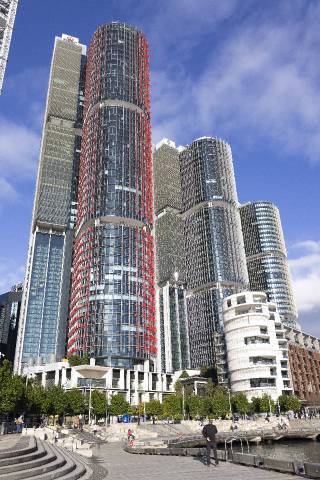 |
| Make | Canon |
| Model | Canon EOS R5 |
| ISO Speed | 200 |
| Focal Length | 28.0mm |
| Aperture: | f/8.0 |
| Exposure | 1/500s |
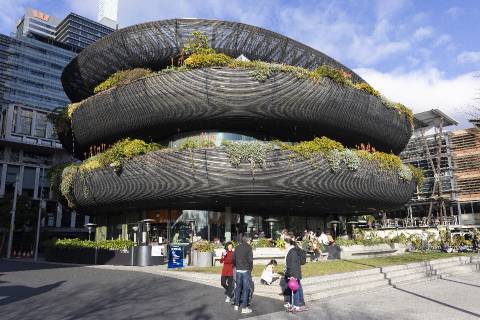 |
| Make | Canon |
| Model | Canon EOS R5 |
| ISO Speed | 200 |
| Focal Length | 28.0mm |
| Aperture: | f/8.0 |
| Exposure | 1/320s |
 |
| Make | Canon |
| Model | Canon EOS R5 |
| ISO Speed | 200 |
| Focal Length | 28.0mm |
| Aperture: | f/2.8 |
| Exposure | 1/1250s |
Competition
Canon R is a closed system, so the RF 28mm f/2.8 STM (shown to the left) is from other in-house lenses. If we don't leave the price bracket too much, then there's the Canon RF 24mm f/1.8 STM IS macro (center) and the RF 35mm f/1.8 STM IS macro (to the left). Obviously, both are much bigger but they are also faster, offer IS as well as some semi-macro capabilities. Optically, they are decent, but nothing outstanding, really. The RF 28mm f/2.8 STM is sharper than both - while being substantially more affordable.

Verdict
The Canon RF 28mm f/2.8 STM is a pleasant surprise, especially in terms of sharpness. It may be a tiny lens, but optically it's a big boy and as sharp as a tack, even at f/2.8. We have seen only a few lenses with MTFs this high across the image field. Lateral CAs are low. Conversely, image distortions are on the high side in RAW files. However, we have seen much worse, and the issue is nicely auto-corrected anyway. The original vignetting is also high at f/2.8, but once again - this will be corrected unless you disable the feature. A wide-angle lens with a max aperture of f/2.8 has limited shallow depth-of-field capabilities, but in the right circumstances (at close focus distances), the out-of-focus blur is actually quite smooth. This is unusual for such a lens. Axial CAs can be visible at f/2.8, although this tends to be of lesser concern with such a lens. The lens struggles a bit with strong light sources, but the issue is primarily confined to the direct surroundings of the light.
In terms of build quality, it is true to its price tag - which doesn't mean that it's bad. The lens barrel is made of good quality, slightly textured plastic based on a metal mount. The inner lens tube extends a little bit once the camera is switched on. It's a bit weird, and also somewhat annoying, that the inner barrel retracts automatically when trying to attach the lens cap while the camera is still on. Hopefully, Canon will fix this behavior via firmware. Weather sealing has not been implemented, as far as we could make out. The AF is only Okayishly fast and not noiseless either. It's not a big deal but worth mentioning.
Overall, the Canon RF 28mm f/2.8 STM isn't just adorable for its tiny size; it's also extremely capable - within its scope. If you want to keep a low profile during shooting, it's almost a must-have. Therefore - "highly recommended!".
Optical Quality:
★★★★★ (@45 megapixel)
Mechanical Quality:
★★★★★
|
|